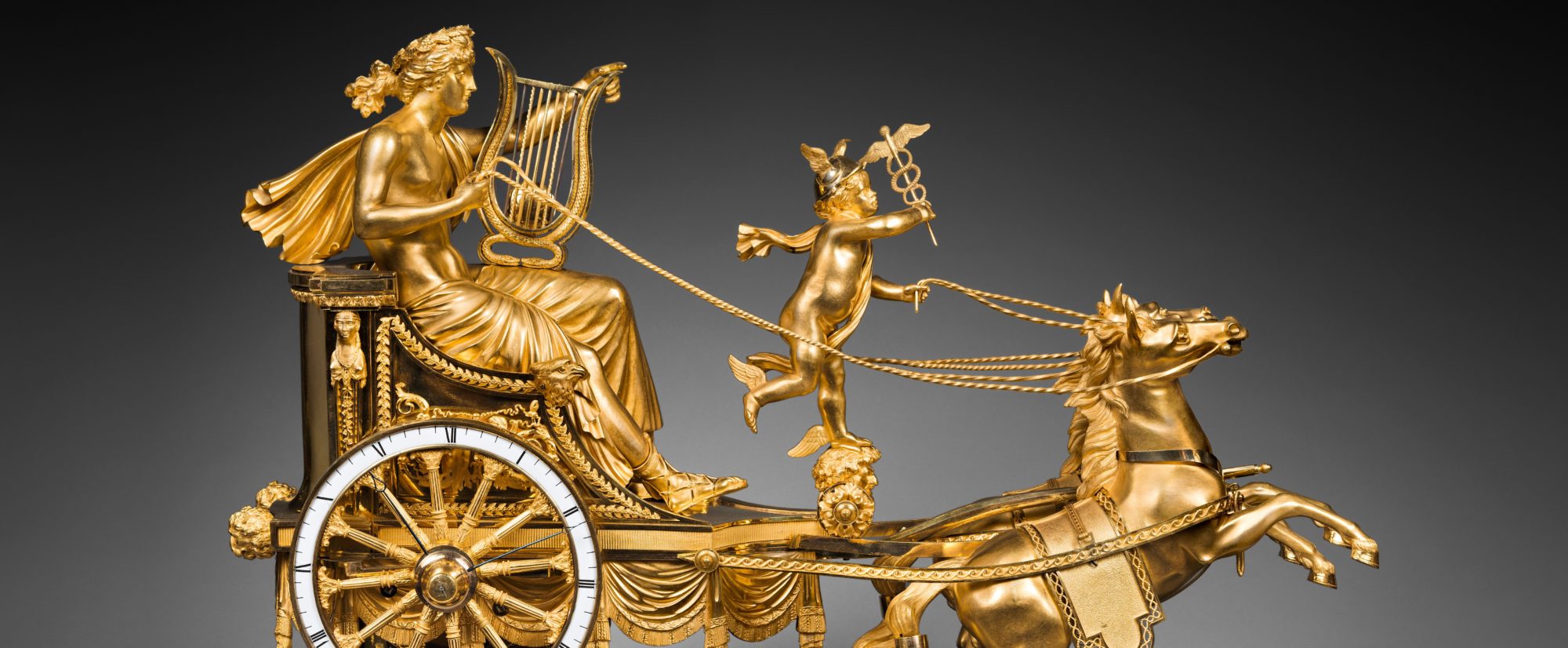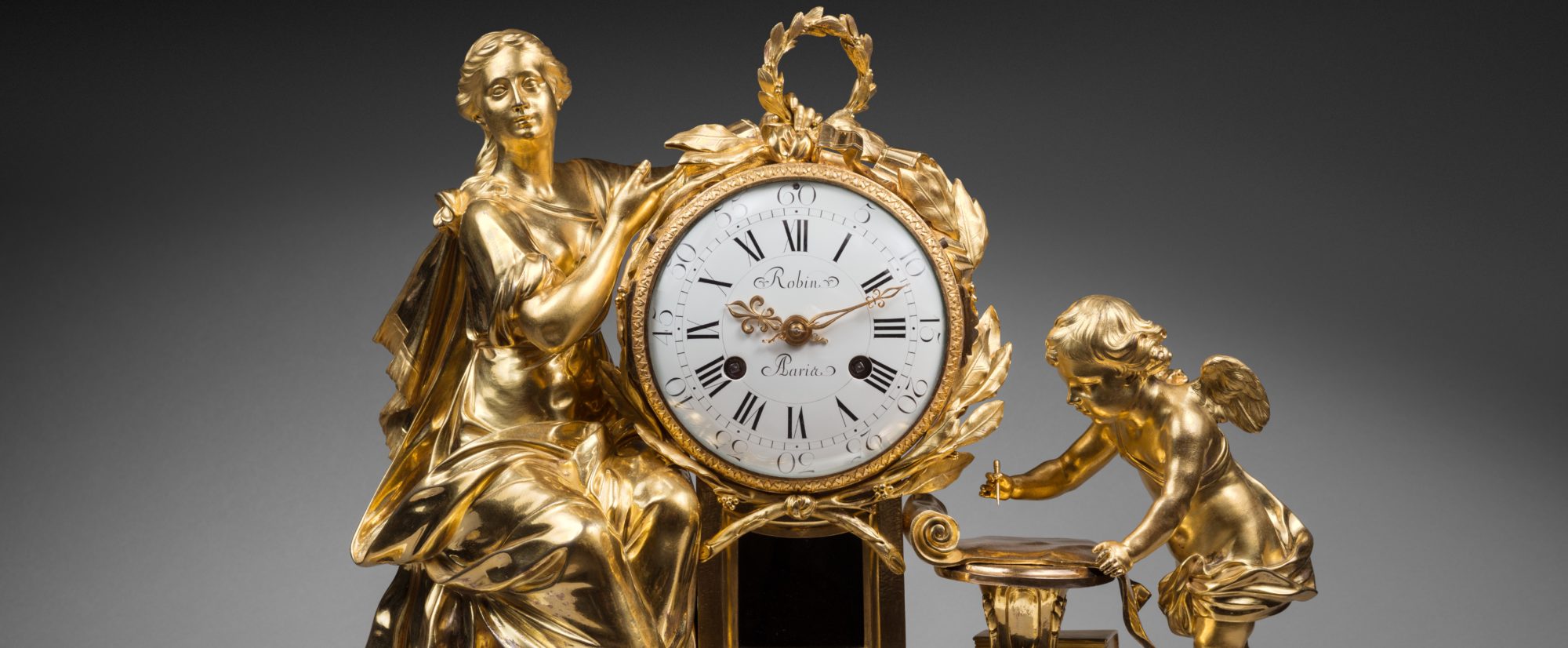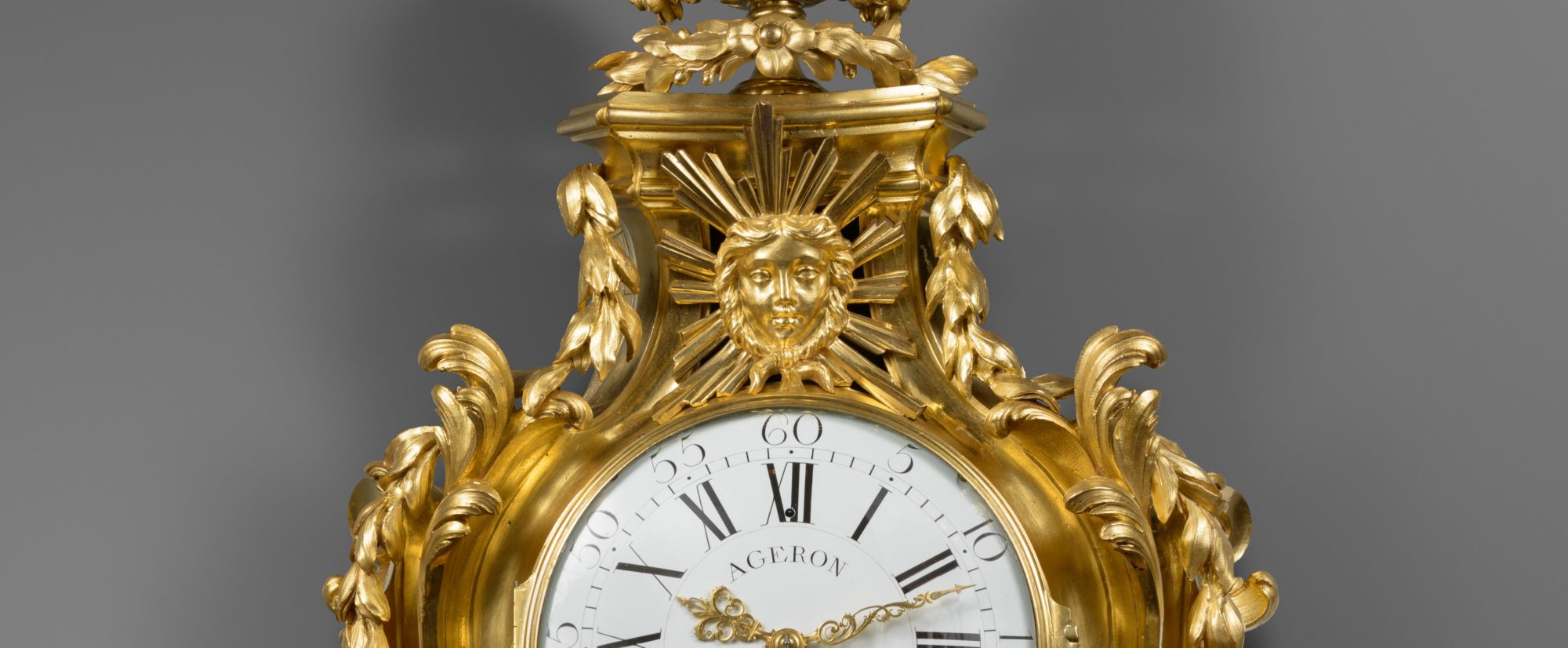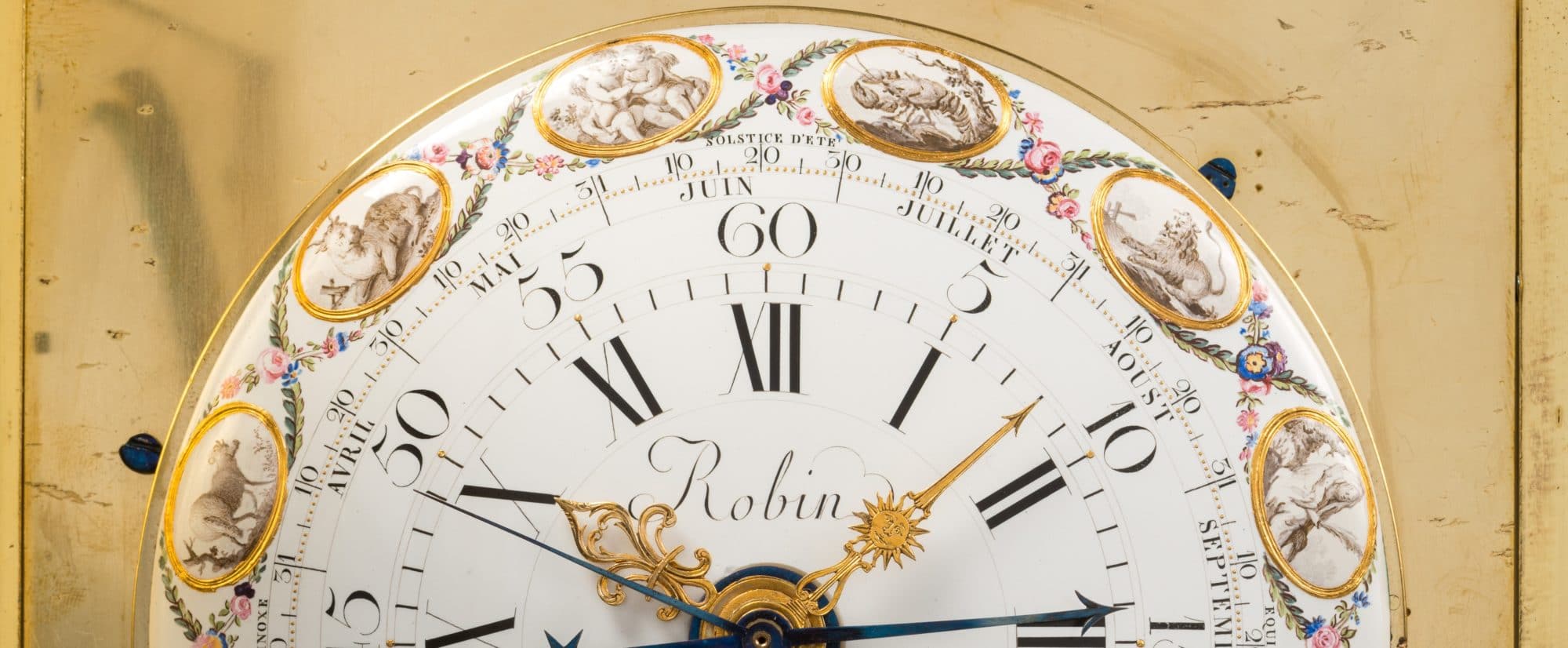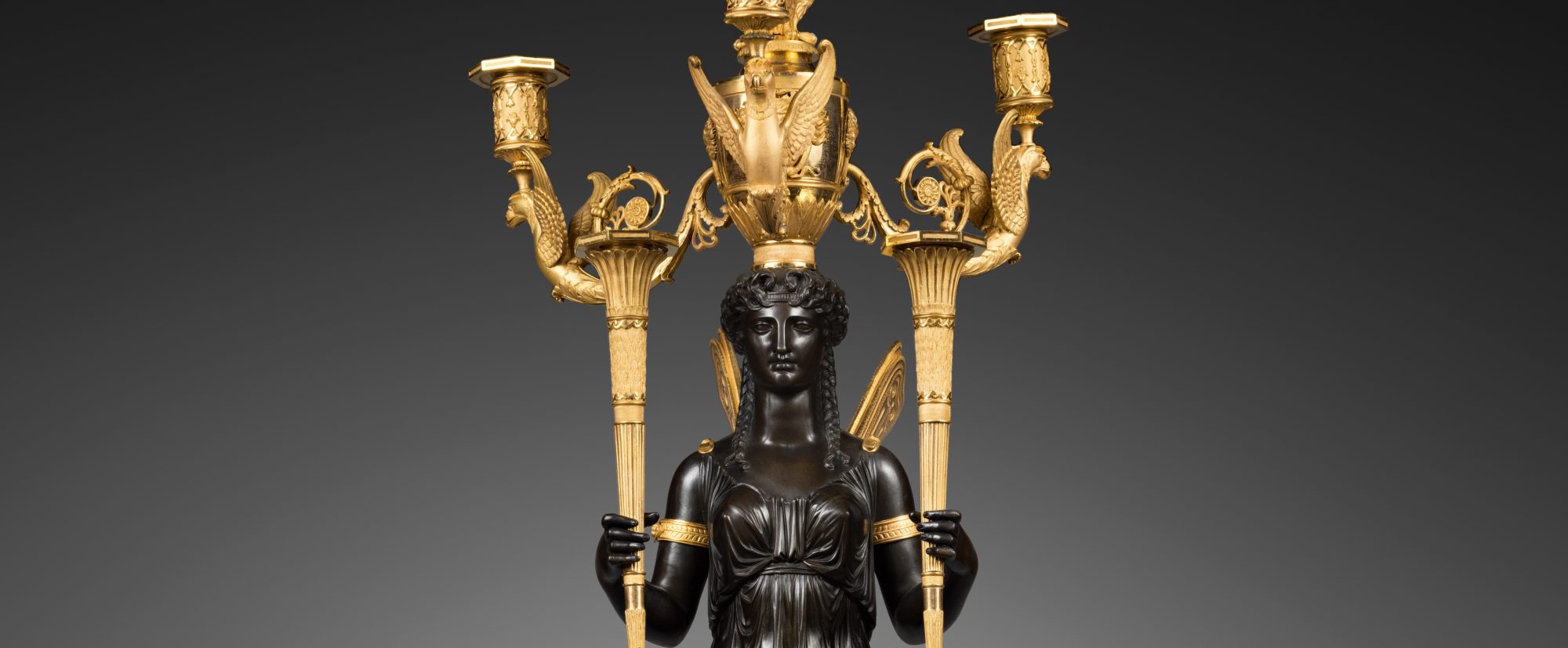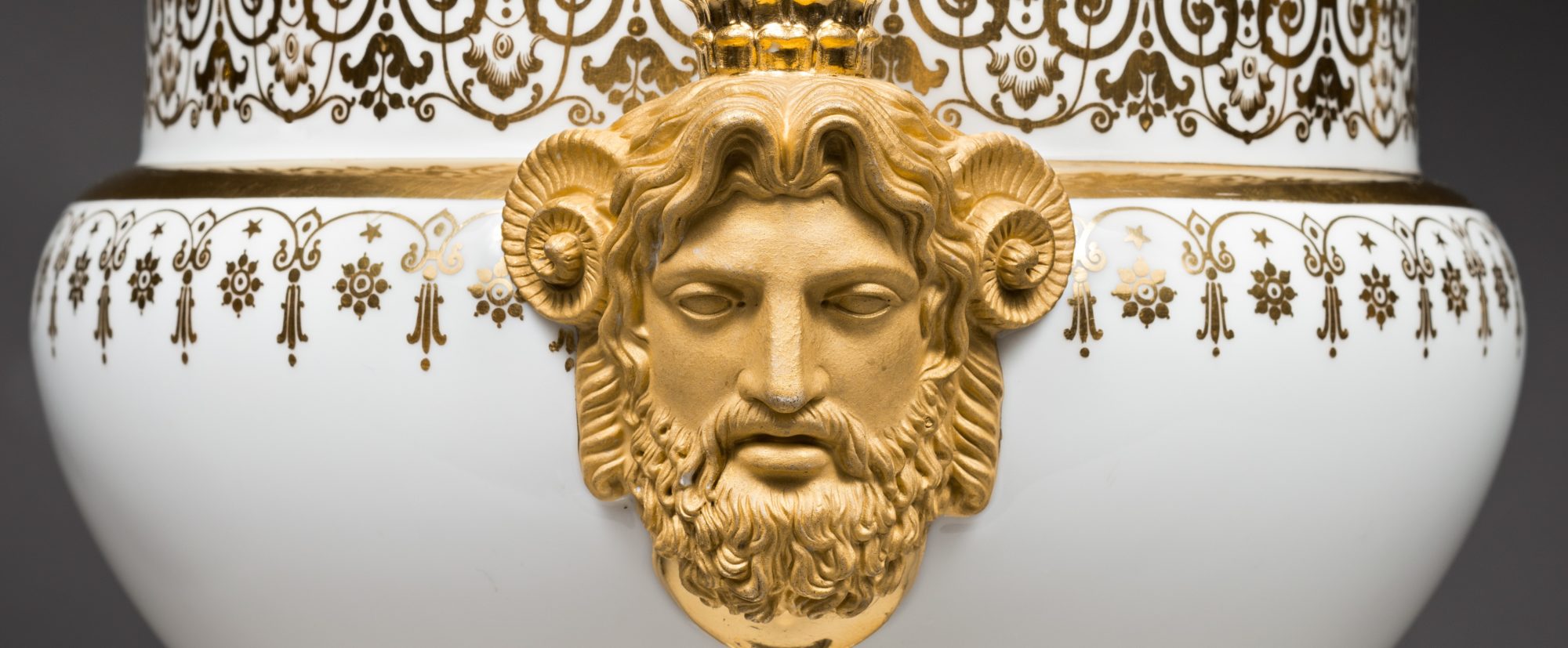Zacharie-Joseph Raingo
Clockmaker
Little is known of the life of Zacharie Raingo, who was active from circa 1795 to circa 1830. Born in Mons, Belgium, on July 2, 1775, Zacharie-Joseph Raingo was the son of clockmaker Nicolas-Joseph Raingo. Trained in his father’s workshop, he worked in Tournai from 1795 to 1807, then developed his activity in Ghent (Belgium) from 1810, before deciding to settle in Paris on rue de Cléry in 1813. At that time, Raingo started specializing in the creation of particularly sophisticated orrery or planetarium clocks, equipped with sphere-rotation mechanisms designed to demonstrate the positions and trajectories of the celestial bodies in the solar system known at the time; he filed a patent to protect his research. He quickly became a household name among horology enthusiasts and in 1823, he was awarded the title of “Horloger-Mécanicien de S.A.S Monseigneur le Duc de Chartres ”, meaning “Clockmaker – Mechanical Engineer to His Serene Highness the Duke of Chartres ” (the future King Louis-Philippe), and the following year, “Horloger-Mécanicien du Garde-Meuble de la Couronne ”, meaning “Clockmaker – Mechanical Engineer to the Crown’s Furniture Repository ”.
In just a few years, Raingo became the most famous horologist for precision clocks of the Empire and Restoration periods. One of his clocks was briefly included in the 1834 sale of the collection of Jacques Laffitte (one of Napoleon’s financial advisers and nicknamed the King of Bankers); it was described as follows: “A clock with columns, in mahogany, adorned with gilt copper, mechanical movement by M. Raingo”.
Four of his sons, Adolphe-Hubert-Joseph, Charles-François-Victor, Denis-Lucien-Alphonse, and Dorsant-Emile-Joseph, followed in their father’s footsteps, and the “Raingo Frères ” House (“Raingo Brothers ”) was founded in 1823, with the workshop moving a few years later to 8 rue de Touraine in Paris. At the Exposition des Produits de l’Industrie (Industrial Products Exhibition) in 1844, the jury rewarded the company with the following commendation:
“MM. Raingo frères, à Paris, rue Saintonge, 11. Before talking about their products, let’s say a word about these manufacturers : they are a family of industrialists made up of four brothers, whose intelligence has constantly contributed to the prosperity of their establishment, in Paris and abroad. The commercial side of their business dominates, and their export figures are considerable. Among the large number of objects on display, we noticed a Louis XIV clock, Neptune’s chariot, accompanied by two candelabras and two very rich vases; a Renaissance clock, decorated with painted porcelain, and potiches trimmed with bronzes; two groups, hunting subjects; a clock, Poetry and Eloquence, and candelabras with children, are evidence of the zeal and activity that reign in this factory. In consideration of the importance of this company and the services rendered to the trade, the jury awards MM Raingo frères the bronze medal” (Rapport du jury central, Exposition des produits de l’industrie française en 1844).
Today, some of House Raingo’s creations can be found in major international private and public collections, including clocks in the English Royal Collection at Windsor Castle, the Kelvin Grove Museum in Glasgow, the Science Museum in London, the Poldi Pezzoli Museum in Milan, the Musée d’Art et d’Histoire (Museum of Art and History) in Brussels and the Musée des Arts et Métiers (Museum of Arts and Crafts) in Paris.
